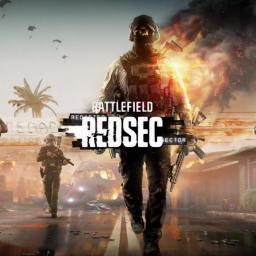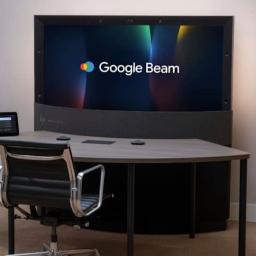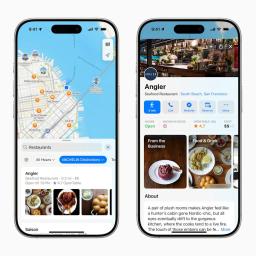 |
by Mariella Moon on (#713A4)
YouTube will enforce new rules that are supposed to strengthen the enforcement of its guidelines around online gambling and graphic video game content starting on November 17. One of the biggest changes it's implementing is age-restricting gaming videos featuring realistic human characters in scenes depicting torture or mass violence against non-combatants.The streaming website says it will take into account the duration and prominence of the scene in a video when reviewing one. For compilation videos, it will consider the cumulative duration of the scenes classified as graphic under its policies. Any video placed behind an age check barrier will be inaccessible to viewers under 18 or to anybody who's not signed into their Google accounts. YouTube didn't specify the duration that would get a video restricted, but a spokesperson told The Verge that "certain content may be age-restricted if it's non-fleeting or zoomed in." Creators can get around the restriction, however, by blurring any violent scene.In addition, YouTube is implementing stricter online gambling rules. It already prohibits videos directing people to online gambling sites or apps not certified by Google. Starting on November 17, it will also prohibit online gambling videos that involve items with monetary value, including digital goods like NFTs and game skins. The website is also age-restricting content with online casino-style games, even if they don't involve items with real monetary value.YouTube will review old videos and remove them or put them behind age checks if they're found to be in violation of the new rules, but it will not issue strikes to creators if they were uploaded before November 17. Creators can also edit their videos before that date with the website's trim and blur editing tools.This article originally appeared on Engadget at https://www.engadget.com/entertainment/youtube/youtube-will-strengthen-enforcement-around-violent-and-gambling-games-in-november-123051469.html?src=rss
|
 Engadget is a web magazine with obsessive daily coverage of everything new in gadgets and consumer electronics
Engadget is a web magazine with obsessive daily coverage of everything new in gadgets and consumer electronics
| Link | https://www.engadget.com/ |
| Feed | https://www.engadget.com/rss.xml |
| Copyright | copyright Yahoo 2025 |
| Updated | 2025-12-27 14:31 |
 |
by Steve Dent on (#713A5)
Apple is planning to introduce OLED displays to its iPad Air, iPad mini and MacBook Air devices, Bloomberg's Mark Gurman reported. The technology offers deeper blacks and better contrast than the LCDs currently used on those devices, which would make them better for things like content creation and entertainment. However, OLED is also more expensive, so it could result in higher prices on future models.The company is currently testing versions of each product with OLED screens, according to people familiar with the matter. That display tech is usually reserved for higher-end PCs and tablets - right now, Apple only uses OLED screens in its iPad Pro lineup (apart from iPhones). However, it may be looking to boost flagging sales of Mac and iPad products, with OLED displays offering buyers a good reason to upgrade.The first device to gain the tech will probably be the iPad mini that may launch next year, according to Gurman's sources. The OLED version, code-named J510, may cost up to $100 more thanks to the new display and an updated water-resistant design. The iPad Air and MacBook Air will follow later on, possibly in 2028 in the case of the latter.Earlier this month, both Gurman and analyst Ming-Chi Kuo predicted that Apple would release a MacBook Pro with an OLED touchscreen in late 2026 or early 2027 - despite the fact that Steve Jobs famously hated touchscreens. It's not clear if the MacBook Air with OLED would also have a touch display.On top of the contrast and black level advantages, OLED displays are lighter than LCDs as they don't require a backlight. The main drawback is a lack of brightness. Apple's current MacBook Pros use MiniLED tech that does offer higher brightness levels, but has inferior contrast compared to OLED. Take these rumors with a grain of salt, of course, and even if they're accurate, Apple's plans may change.This article originally appeared on Engadget at https://www.engadget.com/mobile/tablets/apple-will-reportedly-shift-to-oled-displays-for-macbooks-ipad-air-and-mini-120005423.html?src=rss
|
 |
on (#713A6)
Uber's robotaxi service with EV maker Lucid and self-driving car company Nuro is officially coming to the Bay Area in 2026. The ride-hailing service previously announced plans to deploy at least 20,000 self-driving Lucid cars powered by Nuro's driving software in July. The partnership between the companies also included investment from Uber in both Nuro and Lucid.Uber's final robotaxi experience will offer rides in Lucid Gravity SUVs running the Nuro Driver Level 4 autonomy system, and be available exclusively through the company's app. Ahead of launch, Uber says Lucid and Nuro are also helping to build out an "Engineering Test Fleet" of over 100 robotaxis to run safety tests. "Nuro will lead the development and validation of a comprehensive safety case across dozens of categories," Uber says, "using simulations, closed course testing, and supervised on-road testing to verify that the robotaxi will operate safely." The final service will be fully owned and operated by Uber.Since Uber sold off its own self-driving software team in 2020, the company has worked with multiple self-driving car companies to continue to offer robotaxis on its service. Just in 2025, Uber partnered with Waymo in Austin and Atlanta, announced plans to work with Momenta in Europe and debuted a partnership with Volkswagen to offer self-driving ID.Buzz vans. This Lucid and Nuro deal is really just one way the company is making serious investments in self-driving."The Bay Area has long been the birthplace of transformative technology, and it's only fitting that Uber's next-generation robotaxi program with Lucid and Nuro will begin here - launching to the public next year," Sachin Kansal, Uber's Chief Product Officer, shared in a press release. "By combining deep expertise in electric vehicles, autonomy, and ride-hailing, we're laying the groundwork for safe and scalable autonomous rides in the Bay Area and beyond."
|
 |
by Sam Chapman on (#7137R)
I really like Surfshark VPN. Like I said in my full Surfshark review, it's the fastest VPN on the market, with download speeds that beat all the other best VPNs. It also gives you universal split tunneling, multi-hop with customizable endpoints and unlimited simultaneous connections.Surfshark does have its flaws, though. The apps hang up on error messages a bit too often and features sometimes turn on when you don't need them. If anything about Surfshark is annoying you enough that you're ready to switch, here's how you can cancel your subscription, get a refund and (if you want) delete your account altogether.How to cancel auto-renewal on SurfsharkTo cancel Surfshark, all you need to do is stop your subscription from automatically renewing. After you cancel auto-renewal, you can keep using Surfshark for the rest of the period you paid for (unless you get the refund or delete your account entirely). Assuming you bought your subscription through the Surfshark website, follow these steps to cancel.
|
 |
by Daniel Cooper on (#7132T)
It's been nearly three years since Withings first showed off U-Scan to a bemused world, and now it's finally on sale. U-Scan is the company's at-home urinalysis gizmo which sits in your toilet bowl and tests your first splash of the day. The device runs a tiny sample through a microfluidic to test, depending on what cartridge you use, either your nutritional or kidney health. These results are then sent to the Withings app, letting you track the quality of your urine over time. Your humble narrator holds the dubious honor of being the first reporter to test the U-Scan during its debut, and found the results pretty interesting. There are two cartridges available at launch, the first dubbed Nutrio, which looks at your body's response to nutrition. It will look at your urine's pH, specific gravity, ketones and the presence of vitamin C over time. Those factors can help you understand if your diet is too acidic, how much fluid you're drinking on a regular basis, if you're burning fat, and your anti oxidant intake. The company says that Nutri will be of special interest to people taking GLP-1 medication for weight loss to help them monitor changes to their nutrition levels. Calci, meanwhile, will track your urine's pH, specific gravity and calcium levels, to keep an eye on your risk of developing kidney stones. Naturally, such a tool will not be the most affordable in the world, and you can expect to pay a hefty price to own one. Pay $379.95 and you'll be able to get a U-Scan, a single cartridge that will last for three months, and access to Withings+. The options are then split across Proactive" and Intensive" Plans, with the former giving you 2-4 analyses per week, while the latter runs near-daily. If you want the closer monitoring, then $449.96 will get you two cartridges and Withings+ access, which will last you the same three month window. As for replacement cartridges, those on the Proactive tier will spend $99.95 every quarter, while those in team Intensive will pay $179.95. As part of signing up for Withings+, you'll get a free coaching session with a registered dietician available in all 50 states. This article originally appeared on Engadget at https://www.engadget.com/home/withings-380-toilet-mounted-urine-analyzer-is-finally-ready-to-buy-040146049.html?src=rss
|
 |
by Danica Creahan,Liz Kocan on (#711RS)
The 2025 Fall Classic saw a historic Game 4 between the Los Angeles Dodgers and the Toronto Blue Jays, with the Dodgers defeating the Blue Jays 6-5. The World Series continues in Los Angeles tonight - Monday, Oct. 27 - at 8PM ET/5PM PT, with the Shohei Ohtani starting Game 4 on the mound. The World Series odds favor the Dodgers ahead of tonight's game. Every 2025 MLB World Series game will air on Fox and Fox Deportes. Of course, Fox is a "free" over-the-air channel, so any affordable digital antenna will pull in the game if you live close enough to a local affiliate. But if that's not an option, here's a full rundown of how to watch the Dodgers vs. Blue Jays World Series, even without cable. How to watch the L.A. Dodgers vs. Toronto Blue Jays, Game 4 You can stream Fox on any live TV streaming service that airs Fox local stations, including DirecTV, Fubo and Hulu + Live TV. MLB World Series games will also be available on Fox's new streaming platform, Fox One. More ways to watch the 2025 World Series How to watch the MLB World Series from Canada: When is the Dodgers vs. Blue Jays game time? Game 4 of the Dodgers vs. Blue Jays World Series is tonight, Oct. 28 at 8PM ET/5PM PT. What channel is playing the Los Angeles Dodgers vs. Toronto Blue Jays? Every game in the 2025 World Series between the Los Angeles Dodgers and the Toronto Blue Jays, will air on Fox and Fox Deportes. When is the 2025 World Series? Game 4 of the World Series between the Dodgers and Blue Jays is scheduled for Oct. 28, 2025. Los Angeles Dodgers vs. Toronto Blue Jays World Series schedule All times Eastern.
|
 |
on (#712YV)
If you're a person who enjoys the social side of online gaming, this product launch is not for you. Board was designed by entrepreneur Brynn Putnam, alongside former World of Warcraft exec Seth Sivac, as a way to make the idea of "screen time" a more immersive in-person experience. "Families want to connect, but they're competing with incredibly powerful technologies," Putnam told USA Today. "Board is about flipping that dynamic - using tech to support real human connection instead of replacing it."The product acts like a typical tabletop game that you lay out flat, just like the cardboard play space for Monopoly or Settlers of Catan, but it offers additional digital interactions on the digital screen. The 12 games included are original to Board, each with unique piece sets.Putnam has past experience creating tech that blends the physical and the digital. Her previous project, Mirror, was a workout screen for delivering live fitness classes at home. The company later got bought up by lululemon for a cool $500 million. Putnam is billing Board as "the first ever face-to-face gaming console" and at $499, its price tag nearly matches what you'd expect for current console hardware. And that's the limited time offer; the website says Board will normally retail for $699. The sales pitch leans hard on the idea of connecting families without their phones, but for that cost, you could also buy more than a dozen different board and card games to eliminate the screens altogether. And screens don't have to be the enemy. There are plenty of amazing couch co-op video games out there, including kid-friendly ones, not to mention the fact that even single-player games can be multiplayer experiences if you have the right mindset.This article originally appeared on Engadget at https://www.engadget.com/gaming/board-is-a-500-board-game-console-with-12-original-titles-223313978.html?src=rss
|
 |
by Ian Carlos Campbell on (#712YW)
GOG kicked off its annual Autumn Sale today with some discounts on excellent PC games that can carry you through the end of 2025. The sale runs through November 4, and notably also includes discounts on several older games maintained as part of the GOG Preservation Program. The Autumn Sale includes sales on newer games like Cyberpunk 2077, which normally costs $60 but is available during the sale for $21, and the open-world game's excellent DLC, Cyberpunk 2077: Phantom Liberty, which you can pick up for $21, down from $30. GOG is also offering Silent Hill 2, the 2024 remake of the classic horror game, for 50 percent off, bringing its price down to $35. And if you're looking for something a little more ruminative, Disco Elysium - The Final Cut is 75 percent off, taking it from $40 to $10. GOG is best known for selling old games, and the Autumn Sale includes some great options there, too. While it's not that old, Doom (2016) for $4, which is 80 percent off its normal $20 price, is pretty hard to deny. There's also classics like Fallout: New Vegas Ultimate Edition, which you can get for $10, down from $20. And EA gems like Spore Collection andSimCity 3000 Unlimitedare also both 50 percent off, at $15 and $5, respectively. New Vegas, Spore and SimCity 3000 are all part of GOG's Preservation Program, which was formally launched in 2024 as a way to guarantee classic titles run on modern hardware, support controllers and more. Maintaining the program has apparently led to its fair share of headaches, though. "To be perfectly honest, it's harder than we thought it would be," Marcin Paczynski, GOG's senior business development manager, shared in an interview with The Game Business. "what we've found out is that the games and how they work has deteriorated way faster than what we thought. And we are not talking only about the game not launching. We are talking about more subtle things as well."This article originally appeared on Engadget at https://www.engadget.com/gaming/pc/gog-autumn-sale-discounts-cyberpunk-2077-silent-hill-2-and-fallout-new-vegas-221329021.html?src=rss
|
 |
on (#712WE)
Two directors from MultiVersus are striking out on their own, forming a new, independent game studio. The platform brawler's production director, Justin Fischer, and technical director, Brock Feldman, have joined forces to launch a new endeavor called Airlock Games. Rather than continuing to follow the AAA route, the first project from Airlock is a sci-fi sim management horror game called What the Stars Forgot. The team plans to run a Kickstarter to generate backing for the game ahead of a planned early access launch in December.Player First Games, the studio behind MultiVersus, was acquired by WB Games last summer, but despite a promising early showing, the game was shuttered in May at the close of its fifth season. But the choice for devs to bounce back with something new and smaller is becoming a familiar refrain in the games industry after several years of layoffs and cancelations. After so many highly anticipated projects have gotten the axe as a money-saving, cost-cutting decision by large outfits, it makes sense that devs might want to have more control over their own destinies.This article originally appeared on Engadget at https://www.engadget.com/gaming/a-pair-of-multiversus-directors-are-launching-a-new-game-studio-211118742.html?src=rss
|
 |
by Will Shanklin on (#712WF)
With digital games outselling physical ones by embarrassing margins, it's easy to conclude that the latter is done for. But sometimes, approaching extinction leads to pockets of nostalgic enthusiasm. (Think the modest resurgence that point-and-shoot cameras are currently enjoying.) That leaves room for Limited Run Games, which specializes in physical copies. The company's latest showcase, LRG3, is happening on Wednesday.This month marks the 10th anniversary of Limited Run Games. There's been plenty of fun stuff during that decade. LRG has launched physical editions of Doom and Doom II - complete with a game box that plays (yep!) Doom. For LucasArts fans, there was a Monkey Island box set (Guybrush statue in tow!). LRG also launched physical editions of indie games like Celeste and Runner 2.What's on tap for the anniversary event? Well, your guess is as good as ours. But the company did tease some of the partners who will have announcements. They include Ubisoft, Square Enix Collective, Astral Shift, Retroware, The MIX and WayForward.LRG3 begins on Wednesday, October 29, at noon ET. You can stream the shindig on LRG's YouTube and Twitch channels.This article originally appeared on Engadget at https://www.engadget.com/gaming/how-to-watch-limited-run-games-2025-showcase-200050327.html?src=rss
|
 |
on (#712WG)
NVIDIA has entered a partnership with Uber to equip more of the rideshare company's vehicles with its autonomous driving infrastructure. The deal centers on NVIDIA's Drive AGX Hyperion 10 autonomous vehicle development platform, a computer and sensor system that can make any vehicle capable of level 4 self-driving, as well as its Drive software. According to the press release, this partnership will see Uber's global fleet of autonomous vehicles growing to 100,000 vehicles over time, beginning in 2027.Several notable auto brands are also collaborating with NVIDIA on the push toward developing truly autonomous vehicles. Stellantis, Lucid and Mercedes-Benz are working on vehicles that would support NVIDIA's L4 technology. Aurora, Volvo Autonomous Solutions and Waabi are pursuing work on implementing Drive AGX Hyperion 10 into long-haul freight vehicles.This article originally appeared on Engadget at https://www.engadget.com/transportation/nvidias-next-move-in-autonomous-driving-is-a-partnership-with-uber-stellantis-lucid-and-mercedes-benz-194442126.html?src=rss
|
 |
on (#712SR)
Don't Nod has a long history of making memorable narrative games, and it looks like the studio's next project will come from Netflix programming. In the company's half-year financial report, Don't Nod noted that it has signed "a development agreement with Netflix for the creation of a new narrative video game based on a major IP." Its Montreal studio is helming the project, while Netflix will publish the game. There are no other details available about the project, including what show or movie it will be based on, so place your guesses now.Netflix's game strategy took some hits over the past year with the closure of its Team Blue studio for AAA game development and walking back plans to add six titles to its lineup. Leadership for games at Netflix also changed at the start of 2025, and since then the strategy has pivoted towards party games and kid-friendly content, mainstream titles and narrative experiences.There are some notable titles in the Netflix library such as Kentucky Route Zero and Oxenfree that seem like a good match for Don't Nod's niche. After arriving on the gaming scene with Life is Strange, Don't Nod continued its work with projects including Life is Strange 2, Tell Me Why and Lost Records, in addition to several more stories under the Life is Strange banner.This article originally appeared on Engadget at https://www.engadget.com/gaming/life-is-strange-developer-dont-nod-is-making-a-narrative-game-for-netflix-184506442.html?src=rss
|
 |
by Matt Tate on (#712ST)
Not for the first time this year, Google has been forced to reassure its users that it has not suffered a large-scale data breach that could affect their Gmail accounts. A few months ago the company released an unusual statement intended to put to bed allegations that its email service had been hit with a serious security issue. And it did so again this week, after numerous news outlets published stories suggesting that 183 million passwords may have been compromised in a new breach.Google has since claimed that this isn't true in posts on X. It says the listed accounts are likely not fresh victims of an attack, but instead recent additions to the Have I Been Pwned data breach search engine's database. The website is a free resource that can quickly tell users if their personal data has been hacked. As noted by Bleeping Computer, HIBP's creator, Troy Hunt, has said in a blog post that over 90 percent of the millions of stolen credentials have been seen before, so are in no way new (16.4 million of addresses were however showing up for the first time in a data breach, according to Hunt)."Reports of a 'Gmail security breach impacting millions of users' are false," Google said in a statement. "Gmail's defenses are strong, and users remain protected. The inaccurate reports are stemming from a misunderstanding of infostealer databases, which routinely compile various credential theft activity occurring across the web. It's not reflective of a new attack aimed at any one person, tool, or platform."Google does use compilations of open credentials like the one recently uploaded to HIBP to alert its users of possible breaches, and has advised users that turning on 2-step verification and adopting passkeys is more secure than relying on passwords alone, which it notes should always be reset immediately if compromised.This article originally appeared on Engadget at https://www.engadget.com/cybersecurity/google-is-once-again-disputing-gmail-was-breached-180031380.html?src=rss
|
 |
on (#712PS)
The transition to the more-secure HTTPS web protocol has plateaued, according to Google. As of 2020, 95 to 99 percent of navigations in Chrome use HTTPS. To help make it safer for users to click on links, Chrome will enable a setting called Always Use Secure Connections for public sites for all users by default. This will happen in October 2026 with the release of Chrome 154.The change will happen earlier for those who have switched on Enhanced Safe Browsing protections in Chrome. Google will enable Always Use Secure Connections by default in April when Chrome 147 drops. When this setting is on, Chrome will ask for your permission before it first accesses a public website that doesn't use HTTPS.Google has been moving in this direction for some time. Chrome started alerting users to unsecure HTTP websites in 2018 and it began defaulting to HTTPS in April 2021. The following year, it started offering Always Use Secure Connections on an opt-in basis.When HTTPS isn't used, an attacker can reroute the connection with relative ease and target a user with malware, social engineering attacks or other exploits. "Attacks like this are not hypothetical - software to hijack navigations is readily available and attackers have previously used insecure HTTP to compromise user devices in a targeted attack," the Chrome team wrote in a blog post. "Since attackers only need a single insecure navigation, they don't need to worry that many sites have adopted HTTPS - any single HTTP navigation may offer a foothold. What's worse, many plaintext HTTP connections today are entirely invisible to users, as HTTP sites may immediately redirect to HTTPS sites." Always Use Secure Connections is one of the Chrome team's attempts to mitigate such risks.HTTP connections still persist in navigations to private sites, such as local IP addresses and company intranets. It's complicated for a private site to obtain an HTTPS certificate (something Engadget has had since 2016, fact fans), because the same private name can point to different hosts on multiple networks. For instance, many router manufacturers use "192.168.0.1" as a local IP address for accessing the hardware's admin panel. Still, HTTP navigations to private sites are inherently less risky than on the public web. They aren't entirely safe, but the only vector of attack for HTTP on private sites is from within the local network.This article originally appeared on Engadget at https://www.engadget.com/cybersecurity/google-chrome-will-finally-default-to-secure-https-connections-starting-in-april-170000603.html?src=rss
|
 |
by Lawrence Bonk on (#711VF)
Battlefield 6's free battle royale game is now available for download. This follows numerous leaks that have been popping up ever since the mainline game hit store shelves on October 10.It's called Battlefield: Redsec and it's free for everyone.You don't need the full-priced game to play. This puts it in direct competition with Call of Duty's own free-to-play battle royale, Warzone.Redsec has a few gameplay modes. There's the usual battle royale, with a big ole map that allows for up to 48 simultaneous players. This mode offers four gameplay classes, plenty of weapons to choose from and unique objectives that reward players with "powerful items." The end goal, as always, is to be the last soldier standing.There's also a duo mode that lets two players jump into a battle royale at once. This version is intended for newcomers, so it gives access to a smaller map.The Gauntlet mode offers a twist on a traditional battle royale. Eight squads of four players compete "in a series of special operations that push every squad to their limit." EA says this is perfect for those who like traditional multiplayer FPS games. Users create custom loadouts and completing various objectives awards the team with points.Finally, there's integration with the Battlefield Portal toolset. This lets players design their own experiences. EA gives examples of a battle royale match that just allows access to sledgehammers or one with only headshots. These tools are also free.We don't know how or if this battle royale will interact with the main game. Warzone typically includes a story that ties into whatever's going on with Call of Duty's seasonal content drops. To that end, Season 1 of Battlefield 6 also releases on October 28. This update includes new maps, modes, vehicles, guns, attachments and cosmetic items.Battlefield: Redsec is available on every platform that Battlefield 6 is available on, including PS5, PC and Xbox Series X/S. This could end up being a pretty big hit for EA, as the main game managed to sell 7 million copies in three days.Update, October 28 2025, 12:40PM ET: This story has been updated to include new gameplay details.This article originally appeared on Engadget at https://www.engadget.com/gaming/battlefield-6s-free-battle-royale-mode-arrives-on-october-28-174419086.html?src=rss
|
 |
by Andre Revilla on (#712PT)
Toyota battery electric vehicles (BEV) owners can now have Apple Maps help them plan charging stops along their route via CarPlay. Alongside an announcement that the Toyota bZ is now on sale, the automaker says all 2023 and newer battery-electric vehicles can now integrate real-time battery information to help drivers with iPhones find compatible chargers. In the US this would simply mean the bZ4X, which is being replaced by the bZ.Apple Maps will take into account factors like battery performance and elevation changes when estimating battery percentages on arrival and charging times.CarPlay is Apple's in-car infotainment system offering maps, music, calendar tools, Siri and more. While it's currently compatible with over 800 car models, EV-charger routing requires access to the car's battery info, which means automakers must work with Apple to enable the feature.The integration's rollout remains pretty limited, and before today's announcement the only compatible vehicles were the Ford Mustang Mach-E, the F-150 Lightning and the Porsche Taycan.Toyota also said the 2026 bZ will have access to the Tesla Supercharger network, opening up more than 25,000 charging locations for the new model. The bZ features the NACS charging standard, first created by Tesla before being open-sourced for the entire industry.This article originally appeared on Engadget at https://www.engadget.com/transportation/evs/toyota-brings-apple-maps-ev-routing-to-its-newest-models-164103063.html?src=rss
|
 |
on (#712PV)
Simogo is celebrating its 15th anniversary with some retrospective projects, which include bringing its games to more platforms. The studio has put together the Simogo Legacy Collection for Steam, Nintendo Switch and Switch 2. This includes all seven of the mobile games that the developer released between 2010 and 2015, including Year Walk and Device 6. The collection will be available on December 2 - the 15th anniversary of the release of Simogo's first game, Kosmo Spin - and it costs $15.Co-founder Simon Flesser noted that the studio's mobile games were in "constant danger of disappearing or ending up being unplayable." (Year Walk was ported to Wii U but we all know what happened with that console.) The idea behind Simogo Legacy Collection is to preserve them and keep the experience as close as possible to the original games," Flesser said. As such, the team has made as few changes as possible while still making sure the games work on PC and Nintendo's consoles.You can use touchscreen controls on Switch and Switch 2 to play the games as they were originally intended. Simogo has also added support for mice, controllers, motion controls and, on Switch 2, dual mouse controls. The bundle includes a bunch of extras too, such as an ebook of Year Walk side stories, a podcast for The Sailor's Dream, additional music, playable prototypes of the games and more.That's not all, though. Simogo is working on Switch 2 versions of its two most recent games, Lorelei and the Laser Eyes and Sayonara Wild Hearts. Expect those to arrive in early 2026. The studio is also bringing Sayonara Wild Hearts back to iOS as a paid app next year. That was a launch game for Apple Arcade in 2019, but it left the service in 2024. I'm very much looking forward to having my favorite game available on a device I carry with me everywhere again, even though it's available on PC and consoles as well.As well as those projects, the studio has teamed up with Lost in Cult to create a coffee table book about the history of Simogo. Heartbeats, Dreams and Laser Eyes: 15 years of Simogo is a softback book with around 250 pages. A deluxe edition with a semi-translucent wrap, a bookmark, commemorative stamp set and (for the first 300 units) a signed bookplate will be available too. Pre-orders open today and the book is expected to ship in late 2026.This article originally appeared on Engadget at https://www.engadget.com/year-walk-device-6-and-other-early-simogo-games-are-coming-to-steam-and-nintendo-consoles-160056076.html?src=rss
|
 |
by Mat Smith on (#712PW)
Oppo's latest flagship phone, like the sleek (but hard to buy) Find N5 foldable, goes hard on the tech specifications. In fact, the Find X9 Pro's specs read like a wishlist of what many want to see in their phones, with a huge 7,500mAh battery, a 200-megapixel telephoto camera and a bright 6.78-inch screen with tiny, almost one-millimeter bezels, all while still measuring in at 8.25mm in thickness. Oh, and an optional telephoto lens add-on that boosts camera zoom to 10x.The Find X9 Pro will be priced at 1,099 (roughly $1,459). The biggest drawback may be that, despite the Find X9 series being Oppo's biggest phone launch yet, it won't be available in the US. Still, with everything that's crammed into this phone, I had to try it out. Do I really want a thinner smartphone? Or one that lasts multiple days before it needs recharging? And man, this telephoto lens is certainly eye-catching.Display and designImage by Mat Smith for EngadgetThe Find X9 Pro has a 6.78-inch display, with peak outdoor brightness at 3,600 nits. On paper, that beats the iPhone 17 Pro, but most people with phones older than a year or two will notice how much brighter phones like the X9 Pro are. Another notable feature is a 1-nit minimal brightness to reduce eye strain when using the phone in the dark. Or in bed. Which we shouldn't do, but we all do. Oppo has also included high-frequency pixel dimming to further reduce the screen's harshness.Like recent phones from its business cousin, OnePlus, Oppo has added a new button on this year's Find X model. The Snap key is on the left of the device, and can be customized to launch apps like the voice recorder, translation apps and flashlight. Meanwhile, the right edge houses the Find X9's Quick Button, which is ostensibly the camera button. Double-tapping it launches the camera app. While it's not as elaborate as the iPhone's Camera Control, you can swipe on the button to zoom in and out while using the camera, which is a simple, welcome addition.Alongside Mediatek's new Dimensity 9500 chip, the Find X9 Pro is another flagship phone with a silicon-carbon battery. With a higher energy density than graphite-based batteries, this means longer battery life without making the phone bigger or thicker. At 7,000mAh, the battery is huge. That's far bigger than the battery found in foldables like Samsung's Z Fold 7 (4,400 mAh) and the Pixel 9 Pro Fold (4,650 mAh). It's even bigger than the one in the OnePlus 13 (6,000 mAh). Fortunately, the Find X9 supports suitably swift charging speeds, with support for 80W SUPERVOOC and 50W wireless charging. During my time with the phone, it would often last two days on a charge. Even after a day of heavy camera use, Google Maps and streaming video, I didn't need to recharge the Find X9 Pro until late afternoon on the second day.CamerasImage by Mat Smith for EngadgetThe Find X9 Pro's camera consists of a 50-megapixel main sensor with f/1.5 lens and optical image stabilization. There's also a 50MP ultrawide camera and arguably the most technically impressive part: a 200MP periscope camera with an f/2.1 lens and OIS. This is further augmented with an attachable teleconverter lens - more on that later.Oppo's Hasselblad collaboration focuses on telephoto, though the company calls its entire camera setup the Hasselblad Master Camera System. I'm not sure it needed such a label.To make the most of the high-resolution sensor, the camera app includes a new Hi-Res mode to capture at 200MP for the telephoto lens and 50MP when using the other two camera sensors. The company warns that the mode is best used in well-lit environments, as it strips out pixel binning and other computational photography techniques that are used when there's limited light.But that's not really the point: it's all about the zoom. The telephoto has a base 3x optical zoom, which can be cropped to a 6x zoom with a 50MP image. It's worth noting that all the cameras on the Find X9 can capture at 50MP. If the phone detects more challenging shooting conditions, it automatically drops down to 25MP or 12MP shots. In reality, I didn't notice the resolution jump in most photos I took, although the rich foliage in some of my landscape shots showcases how much detail the camera system is able to capture.Image by Mat Smith for EngadgetOppo says its computational photography know-how pushes the zoom here to 13.2x, but its algorithms can get a little aggressive and messy with faces and detail at the higher digital zoom settings. Take a look at these pictures taken across a hillside. While the foliage appears crisp and detailed, the walkers are blurry and there's a halo effect around them. At other times, computational photography turned pedestrians into nightmarish faces.In yet another opportunity to mention the Hasselblad collab, there's also an XPAN shooting mode for cinematic 65:24 images. Conversely, if you're into a disposable camera aesthetic, the Find X9 series can also trigger an aggressive double-flash to mimic 00s photography.The same zoom capabilities are available in video capture, too, and the company has added a new Sound Focus mode to strip out ambient noise, which worked better than I expected it to. There are several more video recording upgrades, including full LOG recording (activated in settings) and an integrated LUT preview to check color grading in real time.Image by Mat Smith for EngadgetThen there's the attachable lens. Oppo's Hasselblad Teleconverter is a solid, premium peripheral, with a metal barrel and some heft. It extends the Find X9's optical zoom to 10x, with an equivalent focal length of 230mm. Thanks to the high-res 200MP Telephoto camera sensor, you can punch in at up to 200x digital zoom for stills and 50x zoom for video, although the sweet spot is certainly more in the middle. The add-on teleconverter lens, while not entirely new (Vivo did it first), may be the most intriguing part.You need to use a specific case and mounting plate to securely attach the lens to the phone, but when it's locked in, it feels solid and very secure. It also looks, well, how it looks. Because it's such a slender lens, it looks like something you might use for espionage. It doesn't even look like a point-and-shoot camera. It's... eye-catching, but also so much fun.Image by Mat Smith for EngadgetI've been testing the Find X9's camera chops for a few weeks, and it's been a lot of fun to zoom in with optical zoom clarity, whether at concerts, movie premieres or taking pictures of my nieces during hectic Play-Doh sessions. What's particularly attractive is the combination of high detail and bokeh effect. With the leap in zoom, I had to ensure I was far enough away in order to use the teleconverter, or it would struggle to focus.Image by Mat Smith for EngadgetOppo is pitching its new flagship as the ultimate phone for concerts and live events, and the zoom range is very impressive. Perhaps understandably, when zooming so much, there is a high risk of blurry shots. Oppo includes a special tripod mount that attaches to the lens barrel to ensure the whole thing doesn't tip over, but it's one step too far for me. Carrying around the teleconverter and mounting plate is already a lot. It's also a bit of a chore to have to detach the plate when using the camera without the teleconverter. Oddly, the plate covers the other sensors, meaning that if you want a closer focal point (or want to use anything besides the telephoto sensor), it's an additional pain point before you can take the photo.It's unusual that a phone's main" camera isn't the star of the show, but that may be the case with the Find X9 Pro. However, it's still technically impressive. With a new 1/1.28 sensor codeveloped with Sony, the 50MP main camera can capture triple exposures on each frame before merging them. Oppo claims that it gives images 17 stops of dynamic range. There's also a fourth camera, a True Color camera, dedicated to precisely measuring color temperatures across all the other sensors. Combined, it's an impressive system, but you'll get the most out of it if you're willing to pay for the additional teleconverter.Image by Mat Smith for EngadgetAt 1,099 in the UK, Oppo has priced it identically to the iPhone 17 Pro, although we're still waiting to hear pricing for the teleconverter kit. I feared foldable prices, but this seems at least competitive here in Europe.What's stopping Oppo from breaking into the US? Trade turbulence and competition, probably. If it can refine the experience (and maybe keep its next phone compatible with the same teleconverter), it has a good chance at charming the obsessive smartphone photographer away from their iPhones and Pixels.This article originally appeared on Engadget at https://www.engadget.com/mobile/smartphones/oppos-find-x9-pro-hands-on-detachable-telephoto-lens-7000mah-battery-160006373.html?src=rss
|
 |
by Lawrence Bonk on (#712PX)
It keeps happening. HBO Max just raised prices again, around 16 months after the last price increase. If your debit card is feeling the pain, or if you're just not excited about that weird Harry Potter remake nobody asked for, you may decide to take a break from the perpetually renamed platform. Here's everything you need to know about canceling your HBO Max subscription, so you can streamline those entertainment options.How to cancel via webThe simplest way to end your HBO Max subscription is if you're being billed directly by the company. You can follow these steps in a web or mobile browser to say goodbye to the house that Tony Soprano built.
|
 |
by Daniel Cooper on (#712PY)
The BBC has today announced Doctor Who will return for a Christmas Special in 2026, with news of the next series to be revealed in due course." The broadcaster says the special will be written by current executive producer Russell T. Davies, putting to rest more than a year's worth of doubt.For the unaware, Doctor Who has been a mainstay in the BBC schedules since its 2005 revival, but the BBC felt it couldn't sustain the show's budget alone. In 2022, it partnered with Disney, which bankrolled the show in exchange for the right to stream it globally on Disney+.The Disney deal lasted for two years, plus the yet-to-be-broadcast spin-off The War Between The Land And The Sea. Unfortunately, the revived series was not the world-swallowing hit its backers were hoping for, and there were big question marks about the show's future.Behind the scenes rumors suggested an unhappy set, with the companion role recast just weeks before production began on the second season. With the show's fate uncertain, the series' long-running storyline was tweaked and re-shot beyond the point of incoherence as star Ncuti Gatwa opted to leave.Since then, more details about the series' originally planned conclusion have leaked out, as reported by Den of Geek, validating the stories of disharmony. And since then, many figures connected to the show have claimed that the series was dead in the water as the BBC lacks the funds to properly afford it.The news of a new special and new season will, naturally, provoke plenty more questions as to how the BBC will be able to keep the show going, and how Davies will be able to un-tangle the knot he hastily tied at the conclusion of "The Reality War."This article originally appeared on Engadget at https://www.engadget.com/entertainment/i-cant-believe-doctor-who-is-back-so-soon-153050935.html?src=rss
|
 |
on (#712G7)
OpenAI has completed its long, drawn-out reorganization into a public benefit corporation, the company announced today in a blog post attributed to board of directors chair Bret Taylor. As part of the reorg, OpenAI's nonprofit, now called the OpenAI Foundation, will retain control of OpenAI's for-profit division and hold an equity stake in the company valued at approximately $130 billion. According to Taylor, the Foundation will gain additional control over the for-profit once it reaches an unspecified "valuation milestone."Today's announcement wouldn't have been possible without acquiescence from Microsoft, which before OpenAI recently raised more startup capital, held a 32 percent stake in the company's for-profit unit. In blog post it published alongside OpenAI, the tech giant said it would have a 27 percent stake in the new PBC, valued at approximately $135 billion.Before OpenAI and Microsoft signed a memorandum of understanding in September, negotiations between the two organizations were reported to be tense, with Microsoft showing signs it was drifting away from OpenAI by working more closely with Anthropic to integrate its Claude models into Copilot 365. Now that there's an agreement in place, it appears both sides made some notable compromises.Microsoft, for instance, will continue to hold IP rights to OpenAI's models and products through 2032, with those rights covering systems the company develops after declaring artificial general intelligence. On the subject of AGI, the two companies will hire an independent panel of experts to verify any claim OpenAI makes there, when and if it reaches that milestone.However, Microsoft has agreed to waive any IP rights as they relate to OpenAI's upcoming consumer hardware - that is, the devices the company is working on with former Apple designer Jony Ive. In exchange, OpenAI has pledged to spend $250 billion on Azure cloud computing services - though Microsoft also agreed it would no longer have a "right of first refusal" to be OpenAI's cloud provider. Notably, Microsoft's blog post makes no mention of the revenue-sharing agreement that was at the center of their investment deal.In the end, the most important part of today's announcement is that it clears the way for OpenAI to become a publicly traded company. Much of the company's financial future depended on it successfully completing this transition, and now at least it doesn't have that burden resting on its shoulders.This article originally appeared on Engadget at https://www.engadget.com/ai/openai-completes-corporate-reorganization-with-support-from-microsoft-133109385.html?src=rss
|
 |
by Mariella Moon on (#712G8)
AMD is working with the US Department of Energy to build sovereign AI supercomputers at Oak Ridge National Laboratory, the agency's famous research and development center. NVIDIA describes sovereign AI as "a nation's capabilities to produce artificial intelligence using its own infrastructure, data, workforce and business networks." The company's products will power Lux and Discovery, which will be built by Hewlett Packard Enterprises and will become the DoE's flagship supercomputers under the Trump administration's AI Action Plan. AMD says the supercomputers' development is made possible by a $1 billion investment from private and public funding and that they will help researchers tackle the biggest challenges in energy, medicine, health, and national security.The Lux supercomputer will be powered by AMD Instinct MI355X GPUs, AMD EPYC CPUs and AMD Pensando advanced networking technologies. DoE plans to deploy it sometime in 2026, and AMD says that would make Lux the first US AI Factory supercomputer. Lux would fulfill the agency's immediate AI needs and will give the US "an early and decisive advantage" when it comes to deploying AI to accelerate scientific innovation.AMD is also working on the Discovery supercomputer with the same organizations, which will be powered by next-gen AMD EPYC CPUs that are codenamed "Venice." It will be equipped with AMD Instinct MI430X GPUs, a new MI400 Series accelerator made specifically for sovereign AI and high-performance computing. "The Discovery system will drive scientific innovation faster and farther than ever before," said Oak Ridge director Stephen Streiffer. They're hoping for Discovery to become operational in 2029 and expect it to produce scientific and security breakthroughs, such as how to make nuclear energy safer and cheaper.This article originally appeared on Engadget at https://www.engadget.com/ai/americas-sovereign-ai-supercomputers-will-use-amd-chips-130021080.html?src=rss
|
 |
by Sarah Fielding on (#712G9)
Amazon has announced an approximately 14,000 person reduction in its corporate workforce. The news follows an earlier report from Reuters that up to 30,000 people could be let go. However, the exact number of layoffs is unclear, with the 14,000 figure being cushioned by planned hirings.Engadget has reached out to Amazon for exact layoff numbers, but Bloomberg reports that impacted jobs are within teams such as video games, logistics, payments and cloud-computing.The impetus for this reduction is, of course, AI. In the announcement, Beth Galetti, Amazon's senior vice president of people experience and technology, states that Amazon is "performing well" but "that the world is changing quickly."Galetti continues: "This generation of AI is the most transformative technology we've seen since the Internet, and it's enabling companies to innovate much faster than ever before (in existing market segments and altogether new ones). We're convicted that we need to be organized more leanly, with fewer layers and more ownership, to move as quickly as possible for our customers and business."Amazon has executed a series of smaller scale layoffs regularly over the past few years. These layoffs have hit a range of departments, including Prime Video, Amazon Web Services and newly unionized warehouse workers.This article originally appeared on Engadget at https://www.engadget.com/big-tech/amazon-cuts-its-workforce-by-14000-in-further-embrace-of-ai-125548323.html?src=rss
|
 |
by Steve Dent on (#712D8)
Among the usual slew of AI enhancements to its Creative Cloud apps, Adobe has introduced a new Photoshop AI Assistant to help automate repetitive chores and provide personalized recommendations. At Adobe Max 2025, the company also introduced new tools for Photoshop, Premiere and Lightroom, while launching a new AI generative model and bringing in new third party models from Topaz and others.A key new feature in Photoshop and Express (Adobe's all-in-one design, photo, and video tool) is the AI Assistant that lets you can chat with in a conversational manner to gain "more control, power and potential time-savings," according to Adobe. With that, you can tell it to take on a series of creative tasks like color correction on resizing. You can easily switch between prompts with the agent and manual tools like sliders to adjust brightness and contrast. It can also provide personalized recommendations and offer tutorials on how to accomplish complex tasks.In a brief demo, Adobe showed that when you switch to Photoshop's "agentic" mode in those apps, it minimizes the usual complex interface and leaves you with a simple prompt-based UI. You can then type in the task you want to accomplish, and the agent will perform those steps automatically. You can then jump back into the full interface to fine tune the result by changing things like brightness or levels.Along with the AI Assistant, Adobe introduced a few other AI tools for Photoshop. Chief among those are new partner models for generative fill that lets you easily remove unwanted objects and fill in the hole left behind. Those include Google Gemini 2.5 f!ash, Black Forest Labs FLUX.1 Kontext and Adobe's latest Firefly Image Models. It also introduced Firefly Image Model 5, Adobe's most advanced image generation model yet.Photoshop also gains new Generative Upscale option that uses Topaz Lab's AI to upscale small, cropped and other low-resolution images into 4K with "realistic detail," Adobe says. Another feature, Harmonize, lets you place objects or people into different environments in a realistic manner, eliminating much of work necessary for such compositing. Harmonize also matches the light, color and tone of foreground objects and people to the background.AdobePremiere, meanwhile, introduced a similar feature called AI Object Mask that performs automatic identification and isolation of people and objects in video, so they can be edited and tracked without any manual rotoscoping. The app also gains new rectangle, ellipse and pen masking in Premiere to make targeted adjustments, along with a fast vector mask for quicker tracking.Finally, LIghtroom is getting a new feature called Assisted Culling. It lets you quickly and easily identify the best images in a large photo collection, with the ability to filter for things like focus level, angles and degrees of sharpness.Photoshop's Generative Fill with Partner Models, Generative Upscale and Harmonize are now available to customers today. Premiere's AI Object Mask, Rectangle, Ellipse and Pen Masking and Fast Vector Mask, along with Lightroom's AI Assisted Culling, launch today in beta. Adobe's Photoshop AI Assistant, meanwhile, will be available through a private beta waitlist.This article originally appeared on Engadget at https://www.engadget.com/apps/adobes-new-photoshop-ai-assistant-can-automate-repetitive-tasks-120032017.html?src=rss
|
 |
by Steve Dent on (#712D9)
Adobe has released the latest version of Firefly that now leans heavily on AI for nearly every facet of video and image post-production. The updated app can now use AI to generate narration, music, images and video clips, while even helping you to brainstorm ideas and piece together clips. Many creators may find it distasteful to lean on AI for nearly every aspect of production, but Adobe calls it "a tool for, not a replacement of, human creativity."Firefly has mostly been a content generation tool until now, but Adobe has now introduced the Firefly video editor into private beta. It's a web-based multitrack timeline editor, not unlike Adobe Premiere Pro, that lets you generate, organize, trim and arrange clips, with tools to add voiceovers, soundtracks and titles. You can organize existing Firefly content or generate new ones inside the editor (with presets like claymation, anime and 2D), and combine that with captured media. All that can be edited with "frame-by-frame precision or through a built-in transcript," Adobe said.On top of video, Firefly eliminates the need for humans to make voiceovers and music, too. Adobe's new Generate Soundtrack (public beta) is a Firefly Audio Model-powered AI music generator that lets you select a style or comes up with one to match any clip you upload. It then syncs and times it precisely with that footage.Generate Speech, meanwhile, does the same thing for voiceovers. It gives you a choice between Firefly's Speech Model and one for ElevenLabs, letting you generate "lifelike voices in multiple languages, and fine-tune emotion, pacing and emphasis for natural, expressive delivery."AdobeAdobe is also expanding access to its Fire!y Creative Production tool directly in the Fire!y app as a private beta to start with. It's a complete AI-powered batch image editing system that lets creators piece together clips, automatically replace backgrounds, apply uniform color grading and crop in via a prompt-driven, no code interface.Then there's Fire!y Boards, an "AI-powered ideation surface" to brainstorm new concepts. A feature called "Rotate Object" helps you convert 2D images into 3D so you can position objects and people in different poses and rotate them to new perspectives. Two others, PDF exporting and bulk image downloading, speed the the process of sharing visual concepts across projects.Finally, Prompt to Edit (available now on Firefly) is a conversational editing interface that allows you to use everyday language to describe the edits you want to make to an image, much as you'd use text-to-image tools like Midjourney to create new images. It's available with Adobe's latest Fire!y Image Model 5 AI, along with partner models from Black Forest Labs, Google and OpenAI.With Firefly's AI now able to handle every aspect of production, you may be wondering if this will result in a wave of unwatchable AI "slop" appearing on YouTube and elsewhere. The answer is "probably," but it won't necessarily be cheap. Standalone Firefly subscriptions are $10/month for the basic plan (20 five-second videos), $20/month for the the Pro plan (40 five-second videos) and $199 for the Premium plan (unlimited videos). However, Adobe is throwing in free image and video generation (with some restrictions) for all Firefly and Creative Cloud Pro customers until December 1st. All the new tools are now available either as part of the update, in public beta or in private beta as mentioned above.This article originally appeared on Engadget at https://www.engadget.com/apps/adobes-firefly-can-now-use-ai-to-generate-soundtracks-speech-and-video-120018593.html?src=rss
|
 |
by Mariella Moon on (#712DA)
Insta360 has launched a new camera that sits between the X4 and its current flagship, the X5. The company says the new Insta360 X4 Air is lightest-ever 8K 360-degree camera at just 165 grams. It is definitely lighter than the 200-gram X5 and the 203-gram X4 cameras, but the company says it packs flagship-level features. The camera has 1/1.8-inch sensors and can capture footage with a 134 percent increase in pixel area per frame compared to recording by the X4. It has lenses that users can replace in seconds, with optical coating that doubles its drop resistance compared to its predecessor. The camera is also waterproof up to 49 feet underwater.The company explained that while the "X5 is engineered for precision, X4 Air is made for freedom." It's compatible with most X5 accessories, but since the camera itself is lighter, the whole setup will still be easier to handle. The X4 Air also has a built-in wind guard like the X5 and captures footage from every angle with its dual fisheye lenses. You can later reframe your footage in the Insta360 app to give your viewers various perspectives of what you shot. It has gesture controls and other intelligent tools the X5 also has, and its Invisible Selfie Stick enables drone-like shots like in other Insta360 cameras. Being lighter, however, means it has a battery with a lower capacity: It can last around 88 minutes while shooting at 8K 30fps, whereas the X5 can last up to 100 minutes.Insta360 X4 Air comes in black or white and is now available for certain regions on the company's website and on Amazon. It's coming "soon" in the US and Canada. The Standard bundle will set you back $400, while the Starter bundle that comes with a 114cm invisible selfie stick, a lens cap and an extra battery will cost you $440. Whatever you choose, you're getting a free one-year subscription to the Insta360+ cloud service with 200GB of storage with your purchase.This article originally appeared on Engadget at https://www.engadget.com/cameras/insta360-x4-air-is-a-lightweight-8k-360-degree-camera-120017733.html?src=rss
|
 |
by Sarah Fielding on (#712DB)
Adobe Max kicked off today with a slew of announcements - mostly in the world of AI. But the company also used its creative conference to share that Adobe Premiere's video editing tools are being integrated into YouTube Shorts.It's no secret that YouTube has been taking every step it can to make Shorts compete with TikTok and Instagram Reels. Now, YouTube creators will be able to access Premiere mobile in Shorts by clicking on "Edit in Adobe Premiere." It will include Adobe's editing tools, generative sound effects and, of course, a range of AI features powered by Firefly.YouTube Shorts creators will also see "exclusive" options like a range of effects, presets and transitions. Similarly, they can choose to go for an existing template designed for Shorts or customize ones that can be shared among creators. Adobe Premiere arrived on iOS devices in September, but creators have to export content to YouTube.In a statement, Adobe's chief technology officer and senior vice president of digital media, Ely Greenfield, referred to YouTube as "the world's biggest stage." He continued, "YouTube Shorts has become the ultimate launchpad for creators, and bringing Adobe Premiere mobile's pro-grade video editing tools to millions of YouTube creators helps them make standout content and reach new audiences."The exact timeframe isn't clear, with Adobe simply saying that Premiere mobile is coming to YouTube Shorts "soon."This article originally appeared on Engadget at https://www.engadget.com/entertainment/youtube/youtube-shorts-will-integrate-adobe-premieres-video-editing-tools-120013562.html?src=rss
|
 |
on (#712DC)
When the first big wave of handheld PCs hit the market two to three years ago, they were designed as more travel-friendly and convenient alternatives to traditional gaming rigs. That meant reduced performance in exchange for increased portability. However, there will always be enthusiasts who want more: increased horsepower, better battery life and all sorts of extra features. Out of all the handhelds on the market today, there's practically no device with more tools and special equipment than the Lenovo Legion Go 2. However, just like a luxury SUV, this bucket of components commands a hefty premium and has capabilities that you might not use every day. But if you are the type of person who's looking for a flagship portable PC with all the bells and whistles, the Legion Go 2 is a true utility gaming handheld. Design The Legion Go 2 looks like a Switch 2 that's fattened up before hibernating for the winter. It has the same basic design with detachable controllers on either side and a screen in the middle; it's just way bigger and bulkier. The Legion Go 2 weighs two pounds and measures 11.6 inches wide (with its controllers attached) compared to 1.6 pounds and 11.4 inches for the ROG Xbox Ally X (and that's including its big, pronounced grips). Both devices make the Switch 2 look downright petite with its 1.2 pounds and 10.7-inch-wide frame. Both the Legion Go 2's left and right controllers can be detached. However, Lenovo used regular old latches instead of magnets, so removing them is clunkier compared to the Switch 2. Sam Rutherford for Engadget Unfortunately, without the magnets that Nintendo uses on the Joy-Con, disconnecting the gamepads on the Legion Go 2 isn't nearly as smooth or easy, but it's still relatively manageable. On the flipside, Lenovo uses Hall Effect sensors for its joysticks, which makes them super responsive, even though they're lighter to push around. I appreciate that, unlike many of its rivals, Lenovo kept the kickstand from its predecessor, as it's super handy if you want to prop the Legion Go 2 up and use it like a mini desktop. Elsewhere, there is a familiar layout for the Legion Go 2's D-pad, face buttons and shoulder triggers/bumpers, along with two pairs of paddles around back. Critically, Lenovo retained the built-in touchpad on the right controller, which is super handy for those times when you need to mouse around in the Windows 11 desktop. And like its predecessor, you can detach the right gamepad, flick the hidden switch on the bottom into FPS mode and then combine it with Lenovo's included base to create a vertical mouse of sorts. Here's how the size of the Lenovo Legion Go 2 (top) compares to a major rival like the ROG Xbox Ally X (bottom). Sam Rutherford for Engadget Ostensibly, this setup is meant for people who want extra precision in shooters and there is even an extra set of mouse buttons and an embedded scroll wheel on the controller for that reason. The one hiccup for me is that the puck isn't that much smaller than a typical travel mouse. If I really want ultimate control in FPS games, I'm going to use one of those instead of Lenovo's more awkward alternative. As for connectivity, the Legion Go 2 features two USB-C ports (one on top and one on bottom) which support data (up to 40 Gbps), power delivery and display output. There's also a microSD card slot for expandable storage and a 3.5mm audio jack. While a lot of rival handhelds skip this feature, I appreciate that Lenovo still put a kickstand on the back of the Legion Go 2. Sam Rutherford for Engadget I have two small nitpicks with the Legion Go 2's design (aside from its size). First, the headphone port is on the bottom, which isn't ideal as I feel like the top USB-C connector is easier to use when gaming while plugged into the wall. Secondly, Lenovo's fingerprint reader (which is built into the power button) is rather finicky. I didn't have issues unlocking the device, but the sensor is so sensitive that often when I pressed the power button to put the Legion Go 2 into sleep mode, the screen turned off before turning itself on again. This resulted in multiple occasions where I thought I put the handheld to sleep inside the included case (kudos to Lenovo for that freebie) only to come back to a device that was very much awake and felt like it was on the verge of cooking itself inside its padded enclosure. Display One of the best features on the Legion Go 2 is its massive 8.8-inch OLED display. Sam Rutherford for Engadget If money and size are not an issue, Lenovo's massive OLED display is the biggest reason to choose the Legion Go 2 over rivals like the ROG Xbox Ally X. At 8.8 inches, it's significantly larger than the 7-inch panel on the ASUS or the 7.9-inch screen on a Switch 2. Not only are its colors super rich and saturated, it has a slightly higher 144Hz refresh rate and a taller 16:10 resolution (1,920 x 1,200). And at 500 nits, it's just as bright as the screen on the ROG Xbox Ally X. The downside is that if you want to game at the Legion Go 2's native res, it does take a little bit of extra performance to achieve stable, playable framerates. Performance and software The $1,100 base model of the Legion Go 2 comes with an AMD Ryzen Z2 chip with 16GB of memory and 1TB of storage. However, if you want even better performance, you'll need to upgrade to the $1,350 version that comes with a Z2 Extreme chip and 32GB of RAM, which is the configuration I tested for this review. Frankly, that is a lot of money to drop on a gaming handheld of any kind, though the Legion Go 2 does make up for it with class-leading performance. Well, almost. If you want big performance, the Z2 Extreme version of the Legion Go 2 is among the best on the market. Sam Rutherford for Engadget While the maxed SKUs of both the Legion Go 2 and ROG Xbox Ally x are based on the same Z2 Extreme chip, Microsoft was able to tweak some of Windows 11's tasks and services that run in the background on Lenovo's' rival. And while there isn't a huge gap between the two, that optimization does make a difference. Generally, the ROG Xbox Ally produced framerates that were around seven percent higher than what I got from the Legion Go 2 at the same graphics settings and resolution. In Cyberpunk 2077 at 35 watts on medium, 1080p resolution and FSR set to performance, the Legion Go 2 hit 57.5 fps compared to 62.1 fps for the ROG Xbox Ally X. Meanwhile in Returnal at 17 watts on medium, the Lenovo reached 39 fps versus 42 for ASUS. Depending on the game and the exact resolution you're using, that could mean the difference between something being a good experience or not. For example, in Clair Obscur: Expedition 33 at 1080p on medium, the ROG Xbox Ally X hovered right around 30 fps. Granted, that isn't ideal, but it's not bad for a handheld running a relatively new title. But on the Legion Go 2 at its native res, its average framerate was closer to 25 fps, which forced me to drop down to low settings to get a smoother experience. This is what the Legion Go 2's controller looks like when you use it in FPS mode. Sam Rutherford for Engadget Like a lot of Windows-based handhelds, it's important to remember that you get more speed when connected to a power outlet. For example, the Legion Go 2's Performance mode tops out at 20 watts when not plugged in, but increases to 32 watts when it is. And if you want to go all out, you're best off using the Custom setting, which gives you a sustained TDP of 35 watts and the ability to boost to 45 watts for up to 10 seconds. As for the software, Lenovo's Legion Space app has come a long way and it's turned into a solid one-stop shop for launching games, adjusting settings and tweaking performance. As always with Windows-based handhelds, there's still a bit of awkwardness during setup when you're installing titles and having to switch between various menus. Thankfully, Lenovo's built-in touchpad helps smooth that out quite a bit. I'd also argue that because of that trackpad and the handheld's adaptable design, the Legion Go 2 is the most well-equipped portable for anyone who wants to use it like a mini PC. You can prop the display up with its kickstand, connect a display via USB-C and pair a wireless keyboard and mouse (or use the right controller in FPS mode) and suddenly you've got a little desktop for getting some real work done. (Who are we kidding, this is still going to be used for gaming, just on a bigger display with better controls.) Battery Life The top edge of the Legion Go 2 features one USB-C port and its power button/fingerprint reader, while the other is on the bottom along with a 3.5mm audio jack and a microSD card reader. Sam Rutherford for Engadget Thanks to a 74WHr cell and a more efficient chip, the Legion Go 2 has gotten a nice bump battery life over its predecessor. However, due to its big display, its longevity isn't quite as good compared to the ROG Xbox Ally X. I tested this by playing Clair Obscur: Expedition 33 at 1080p on medium graphics and max brightness. The Legion Go 2 did well, lasting almost three hours, though that was 30 minutes shy of what I got from the ROG Xbox Ally X. While you can game for a decent length of time untethered, for any longer trips or time away from an outlet, you'll definitely want to keep the included 65-watt power adapter close at hand. Wrap-up The Lenovo Legion Go 2 is large and in charge - both in price and size. The base model starts at $1,100, which is already $100 more than a fully kitted-out ROG Xbox Ally X with a Ryzen Z2 Extreme chip. Meanwhile, to get the same silicon on Lenovo's handheld, you have to shell out $1,350, and even then, its performance still lags just a tad behind Microsoft and ASUS' collab. But what the Legion Go 2 lacks in value, it makes up for in versatility. The Legion Go 2 comes with an included case and a puck that turns its right controller into a vertical mouse. Sam Rutherford for Engadget Its 8.8-inch OLED display is a huge upgrade in terms of both screen space and image quality, while features like its touchpad, detachable controllers and kickstand make this thing feel more like a portable hybrid PC than a single-purpose gaming machine. Just like an SUV that might go off-road once or twice a year, you might not use the Legion Go 2's full capabilities all the time, but when you do and everything comes together, you realize all that utility isn't just for show. While the ROG Xbox Ally X is the better value, I appreciate how Lenovo's handheld was made to handle a variety of battle conditions.
|
 |
by Mat Smith on (#712DD)
Spinning off from Rivian, the TM-B e-bike is Also's attempt at a do-it-all e-bike. It's pitching it as flexible enough for commuting, trail riding or kid- and cargo-hauling because its modular frame can swap in bench seats or cargo racks. But the frame only comes in a single size. Still, Also (hate that name) says the standard battery is good for 60 miles of riding and can be charged via USB-C.EngadgetBesides the modularity, another unique feature is its drive system, called DreamRide. Instead of a mechanical connection between the bike's rear wheel and the pedals, the TM-B uses software-defined pedaling," so pedaling transfers to the generator (and the battery) instead of simply pushing you forward. It's a different take on e-bike riding, and I'm not entirely sold on it.From the people that brought you Rivian vehicles, there are plenty more tech touches, including a 5-inch touchscreen display and a built-in security system that automatically locks the frame and rear wheel when you walk away, a la Cowboy and VanMoof.The first model to ship will be the $4,500 TM-B Limited Launch Edition, which has a range of up to 100 miles. There's also a $4,500 TM-B Performance model, with a slightly different color scheme, available in the first half" of 2026. Finally, there's a base-level TM-B model with a range of up to 60 miles, which only comes with standard ride modes. Also hasn't announced an exact price but says it will cost less than $4,000 when it ships later in 2026."- Mat SmithGet Engadget's newsletter delivered direct to your inbox. Subscribe right here!The news you might have missed
|
 |
by Devindra Hardawar,Cherlynn Low on (#5SJ3T)
While the excitement around 2-in-1 systems has cooled a bit over the years, they're still useful solutions for anyone who wants a device that can act as both a tablet and a traditional laptop. In tablet mode, they're handy for jotting down notes and drawing pictures, and in their full laptop configurations, they can let you manage e-mail and write as you would with a traditional notebook. Whether you're a student, creative or just want a more flexible setup, a 2-in-1 solution gives you the best of both worlds without having to carry multiple devices.
|
 |
by Billy Steele on (#5ZXRH)
Wireless headphones have come a long way from the bulky designs of the past. Today's models are lighter, smarter and packed with features that make them useful for everything from travel to long workdays at your desk. Many offer strong noise cancellation, quick pairing and reliable battery life - all of which makes them an easy upgrade if you want more freedom from your devices.
|
 |
on (#71224)
Grokipedia, the encyclopedia powered by xAI's assistant Grok briefly went online Monday, before it promptly crashed. At the time of this writing, the website appears to be working, and contains more than 885,000 articles, according to a counter on its homepage.Musk, who has previously railed against Wikipedia, has described the project as a "a necessary step towards the xAI goal of understanding the Universe." Musk and his allies have long claimed that Wikipedia is biased. Wikipedia founder Jimmy Wales has called Musk's claims about the crowd-sourced encyclopedia "factually incorrect."
|
 |
on (#711YF)
The movie industry has been in a tailspin for years, with many people foregoing the theatrical experience in favor of watching films at home. I get it. Going to the movies can be expensive and, let's face it, dealing with other people can be annoying (it's been 10 years and I'm still mad about those teenagers who would not stop giggling all the way through my first viewing of The Witch). But there's nothing quite like going to a theater and getting lost in a great film for a couple of hours. In addition, large-scale formats are growing in popularity and theater chains are trying to accommodate moviegoers.Cinemark is installing more IMAX screens, including ones that support 70mm film projection. The company is adding such screens to its locations in Woodridge, Illinois (a suburb of Chicago); Colorado Springs, Colorado; and Rochester, New York. It's also adding four IMAX with Laser systems - a 4K laser offering - to other locations in the US in the coming months. It's upgrading its other 12 IMAX screens across the Americas with that tech too.According to Variety, Cinemark plans to have the new IMAX 70mm film screens set up by July 17, 2026. That's the release date for Christopher Nolan's next film, The Odyssey, which is the first theatrical release to be shot entirely in IMAX. As it stands, only 30 movie theaters on the planet can screen films in IMAX 70mm, which is Nolan's preferred format.IMAX is proving popular with cinemagoers who are looking for a large-format experience that would be impossible at home (at least not without an obscene private screen). Indeed, many IMAX 70mm screenings of The Odyssey sold out a year in advance.IMAX 70mm isn't the only format with limited availability that's drawing audiences to theaters. Paul Thomas Anderson's One Battle After Another is the first movie in 60 years to be projected in the VistaVision format, but only at a few locations. The film is currently being screened in IMAX 70mm in some cinemas too.This article originally appeared on Engadget at https://www.engadget.com/entertainment/tv-movies/cinemark-is-adding-more-70mm-imax-screens-ahead-of-christopher-nolans-the-odyssey-194155824.html?src=rss
|
 |
on (#711VE)
Google has teamed up with the United Service Organizations (USO) to help deployed service members stay in touch with their families in a different way. As part of a pilot program, the company is bringing Google Beam, its 3D video communication tech, to USO service centers in the US and other countries starting in 2026.Google suggests that Beam can help military families who are separated by many miles feel like they are in the same room. While family members can keep in touch with deployed loved ones through group chats and video calls, chatting via Beam could help them feel closer together, if the tech works as well as promised.We got our first look at Beam - then known as Project Starline - in 2021. The holographic teleconferencing system uses 3D imaging, spatial audio and adaptive lighting to make video chats more immersive. Beam is primarily intended for enterprise clients (the first such device costs $25,000), but it's interesting to see Google exploring other applications for the tech.This article originally appeared on Engadget at https://www.engadget.com/ar-vr/google-is-bringing-beam-its-3d-video-conferencing-tech-to-deployed-service-members-174500517.html?src=rss
|
 |
on (#711RQ)
Federal investigators who are looking into Tesla's Full Self-Driving (FSD) tech have requested information from the company about the Mad Max mode it added to the system. The company has claimed that Mad Max offers higher speeds and more frequent lane changes" than its Hurry speed profile."NHTSA is in contact with the manufacturer to gather additional information," the National Highway Traffic Safety Administration (NHTSA) told Reuters. "The human behind the wheel is fully responsible for driving the vehicle and complying with all traffic safety laws."When it opened a fresh probe into FSD earlier this month, the NHTSA said the tech had "induced vehicle behavior that violated traffic safety laws." Some Tesla vehicles with FSD engaged are said to have run red lights and driven against the flow of traffic.Tesla initially offered a Mad Max mode in 2018, before FSD was available. The company revived Mad Max this month and it didn't take long before there were reports of Tesla vehicles that were using the mode rolling stop signs and driving above speed limits.Earlier this year, when Tesla CEO Elon Musk was at the helm of the Department of Government Efficiency (DOGE), the Trump administration initiative reportedly culled NHTSA staff. As part of that, DOGE was said to have fired three people who were part of a small team that worked on autonomous vehicle safety.This article originally appeared on Engadget at https://www.engadget.com/transportation/evs/federal-investigators-are-looking-into-teslas-mad-max-mode-which-reportedly-defies-speed-limits-170913959.html?src=rss
|
 |
by Lawrence Bonk on (#711RR)
Google's long-awaited AI health coach is nearly upon us, as a preview version is launching tomorrow for some Fitbit Premium users in the US. This will only be for Android devices at first, but the company promises an iOS version is in the works.This is a Public Preview version of the software, so think of it like a beta release. Google says it'll incorporate user feedback to "add, change or improve features and capabilities." The company warns users that this is a "new experience, so initially, there will be some gaps."For the uninitiated, Google's AI health coach is exactly what it sounds like. This is an AI chatbot intended to help users reach fitness and health goals. The company boasts that the tech is "secure, personalized and grounded in science." Everything starts with a five to ten minute conversation with the coach to assess health and fitness goals.The coach can be a sounding board for personal health, fitness and sleep goals, but also acts as a personal trainer. Google says it can be used to review and adjust fitness plans, check progress, get advice on trends and create workouts. To that last point, the company says the chatbot can create workouts based on pre-existing constraints. For instance, users can ask the bot to make a workout that can be done in a cramped hotel room.The coach can also be used to brainstorm questions to ask a doctor and to track and analyze a number of sleep metrics. The bot provides a "detailed sleep analysis" and can allegedly understand patterns and trends that can impact sleep. All of this data can be accessed via the app.Being as this is a preview build, it won't roll out to everyone tomorrow. Eligible Fitbit Premium users will receive notification that the software is ready to use. It works with any Pixel Watch or Fitbit device.Google The entire Fitbit app is being redesigned to focus more on AI and this is a large piece of the puzzle. Google promises integration with its health coach across every aspect of the app.This article originally appeared on Engadget at https://www.engadget.com/ai/googles-ai-health-coach-will-soon-be-available-to-some-fitbit-premium-users-170022769.html?src=rss
|
 |
by Lawrence Bonk on (#711RT)
It happened again. Peacock just raised subscription prices for its Premium and Premium Plus plans. This is the third price increase in as many years. If your bank account is feeling the pain, or if you're just looking to streamline your entertainment options, you may decide it's time to take a break from NBC's flagship platform. Here's everything you need to know about canceling your Peacock subscription.How to cancel via webThe simplest way to end your Peacock Premium service is if you're being billed directly by the company. You can follow the same steps in a web or mobile browser.
|
 |
on (#711RV)
Meta's Threads is getting its own version of ephemeral posting with a new feature the company is calling "ghost posts." The temporary posts will be published within Threads' main feed like any other post, but will disappear after 24 hours. And while other users can interact with ghost posts, only the original poster will be able to view likes and replies.Instead of typical public-facing replies, replies to ghost posts will be routed directly to users' inboxes, where they can opt to respond privately. In some cases, this could also mean that replies for ghost posts are more limited than replies to normal posts, as Meta's default messaging settings limit DMs to followed accounts only (these settings can be tweaked in the Threads app).In some ways, it's not surprising Meta would add temporary posts to Threads as a way to encourage users there to share more. On Instagram, Stories are used far more than permanent grid posts. In a blog post, Meta describes the new feature as a way for people to "share unfiltered thoughts and fresh takes without the pressure of permanence or polish."But ephemeral formats haven't always been successful on text-based platforms like Threads. Twitter briefly experimented with an ephemeral Stories like format it called "Fleets." Then-CEO Jack Dorsey reportedly "grew to despise" the feature, and it was killed less than a year after it launched.This article originally appeared on Engadget at https://www.engadget.com/social-media/threads-introduces-ghost-posts-that-disappear-after-24-hours-160000228.html?src=rss
|
 |
by Sarah Fielding on (#711P2)
Using Spotify on Apple TV might be a smoother experience going forward. Spotify has released an entirely new "experience" that integrates many of its mobile features to Apple TV, including managing your queue and viewing lyrics.The updated Spotify for Apple TV app also includes remote control via Connect - hopefully there won't be any future issues with changing the volume. You can also use Spotify DJ, the AI-powered guide for choosing what to listen to next.If you're a big video person then there's another update for you. Apple TV will now be able to show podcast videos and let you adjust playback speed on any videos. It's good timing as Spotify recently announced that some of its podcast videos will come to Netflix in early 2026.The update also brings one of Spotify's newer ventures to Apple TV: music videos. Any Premium subscribers in one of the 97 beta markets with the feature can choose "switch to video" on any song that has a music video. It works just like the tool for Podcasts.All of these updates come with an entirely new interface that Spotify has created specifically for tvOS, redesigned Spotify for Apple TV should roll out for everyone by mid-November.This article originally appeared on Engadget at https://www.engadget.com/entertainment/music/spotifys-redesigned-tvos-app-brings-podcast-and-music-videos-to-apple-tv-143512134.html?src=rss
|
 |
by Andre Revilla on (#70GE6)
Apple deals can be hard to come by, but right now you can save on one of the company's smallest (and arguably one if its most useful) gadgets. A four-pack of Apple AirTags is down to $65 right now, which is 34 percent off its usual price. That brings each AirTag in the bundle down to $16.25 each. If you're an Apple user, then the AirTag is the best Bluetooth tracker on the market for you. You can put these little discs in your wallet, in a backpack or in your luggage while you're traveling. Your AirTag's location will show up in your Find My app, powered by the vast network of iPhones, iPads and other compatible devices that receive the AirTag's Bluetooth signal. Keep in mind these only work when close enough to participating devices to be located. You can attach AirTags to just about anything thanks to an abundance of available accessories. Their built-in speakers can play a tone, triggered from your iPhone, to help you find them when the object they're affixed to is lost. On iPhone 11 and newer models, you can take advantage of the AirTag's Ultra Wideband capability and have your phone lead you right to your AirTag, complete with directional arrows on your iPhone screen.This article originally appeared on Engadget at https://www.engadget.com/deals/airtag-deal-grab-a-four-pack-of-bluetooth-trackers-for-a-record-low-price-143112388.html?src=rss
|
 |
by Sarah Fielding on (#711K9)
Apple only released its newest iPad in mid-October but the device is already on sale. Right now you can pick up the 11-inch iPad Pro (M5) for $949, down from $999. The five percent discount is exclusive to the 256GB Wi-Fi model with standard glass. It's also only available for the Space Black model, though the Silver version is currently listed as $983. We gave the new iPad Pro an 85 in our review, in large part because of its impressive M5 chip. It's especially powerful when you're using the iPad for GPU-powered tasks. While you'll see an improvement from the M4 model, it's a really significant boost if you have an iPad Pro with an M3 chip or older. Then there's the other bits and bobs we liked, such as its extremely thin and lightweight design. It also has Apple Intelligence and an ultra retina XDR display - the screen is really great overall. Plus, the iPad Pro finally supports fast charging, so a 60W power adaptor should get you to 50 percent in just a half hour. Check out our coverage of the best Apple deals for more discounts, and follow @EngadgetDeals on X for the latest tech deals and buying advice.This article originally appeared on Engadget at https://www.engadget.com/deals/apples-ipad-pro-m5-is-50-off-right-now-122611748.html?src=rss
|
 |
by Dana Wollman,Valentina Palladino on (#5YKXT)
Regardless of what kind of exercise you're into, if you're working out, you'll want a pair of wireless workout headphones. They allow you to be free and untethered during a serious weight-lifting session, a 5K run, an hour at the skate park and everywhere in between where you're moving and sweating a ton. There are dozens of great wireless headphones and wireless earbud options out there, but for exercise in particular, there are additional factors to consider before picking one up like water resistance, battery life and overall comfort.
|
 |
on (#7117G)
According to a report from The Information, OpenAI is interested in developing a tool that could generate music from text and audio prompts, and has been working with students from The Juilliard School to help with creating training data. The company envisions something that could be used to generate guitar accompaniment for a vocal track, for example, or to add music to videos, sources with knowledge of the project told the publication.There's no word on how far into these efforts OpenAI is. According to one source that spoke to The Information, OpenAI enlisted the Juilliard students to annotate music scores, which could be used to train the AI. It wouldn't be the first time the company has explored music-generating AI, and it's something we're seeing more and more of elsewhere with other startups, like Suno and ElevenLabs, launching their own versions. AI spam is already cluttering up streaming platforms and, lest we forget, there was the whole The Velvet Sundown debacle. It's only the beginning.This article originally appeared on Engadget at https://www.engadget.com/openai-is-reportedly-working-on-an-ai-music-generation-tool-204208186.html?src=rss
|
 |
by Jackson Chen on (#7116D)
The US Customs and Border Protection (CBP) submitted a new measure that allows it to photograph any non-US citizen who enters or exits the country for facial recognition purposes. According to a filing with the government's Federal Register, CBP and the Department of Homeland Security are looking to crack down on threats of terrorism, fraudulent use of travel documents and anyone who overstays their authorized stay.The filing detailed that CBP will "implement an integrated, automated entry and exit data system to match records, including biographic data and biometrics, of aliens entering and departing the United States." The government agency already has the ability to request photos and fingerprints from anyone entering the country, but this new rule change would allow for requiring photos of anyone exiting as well. These photos would "create galleries of images associated with individuals, including photos taken by border agents, and from passports or other travel documents," according to the filing, adding that these galleries would be compared to live photos at entry and exit points.These new requirements are scheduled to go into effect on December 26, but CBP will need some time to implement a system to handle the extra demand. According to the filing, the agency said "a biometric entry-exit system can be fully implemented at all commercial airports and sea ports for both entry and exit within the next three to five years."This article originally appeared on Engadget at https://www.engadget.com/cybersecurity/cbp-will-photograph-non-citizens-entering-and-exiting-the-us-for-its-facial-recognition-database-184557905.html?src=rss
|
 |
by Jackson Chen on (#7114Y)
Opening Apple's Maps app just for directions may look a little different in the near future. According to Bloomberg's Mark Gurman, Apple is planning to introduce ads to Maps as soon as next year. While it won't be as annoying as unskippable YouTube ads, Apple wants to offer better visibility on Maps to restaurants and businesses that are willing to pay.When looking for a new restaurant or relevant business, you may already be used to seeing ads on Google Maps or Yelp that highlight certain establishments. However, Gurman said that Apple is planning to lean on AI for better search results and offer a better interface than Google Maps. The introduction of ads across Apple's iOS ecosystem shouldn't be surprising since Gurman previously reported Apple's interest back in 2022. On top of that, Apple already offers ad slots within the App Store where developers can pay to appear in a more visible position for user searches. Beyond Maps, Apple could be looking at infusing ads into its News, Books, Podcasts and other apps to generate more revenue.This article originally appeared on Engadget at https://www.engadget.com/apps/apple-is-reportedly-getting-ready-to-introduce-ads-to-its-maps-app-170654072.html?src=rss
|
 |
by Jackson Chen on (#71137)
The iterative upgrades for iPads may not be enticing enough to warrant a new purchase every year, but Apple may have a particularly cool upgrade to convince users to shell out for the next iPad Pro. According to Bloomberg's Mark Gurman, Apple is planning to include a vapor chamber for the upcoming iPad Pro that's due to ship with the M6 chip.We've already seen the vapor chamber included in the iPhone 17 Pro models, helping to boost cooling and performance. While an iPad's larger surface area makes for greater heat dissipation than an iPhone, this cooling system should make the tablet more capable when it comes to demanding tasks, like gaming, video editing or AI apps. Gurman also predicts that Apple could market the vapor chamber cooling as another way to differentiate between the iPad models.Apple previously improved the cooling performance of iPad Pros with the M4 generation, which included a new copper heat sink. With the vapor chamber, Apple is borrowing a concept already found in other smartphones from Samsung and Google. Samsung has even included this style of liquid cooling in its Galaxy Tab S9, which came out in 2023. As for the first potential iPad Pro with a vapor chamber, Gurman said he expects Apple to follow its typical 18-month release schedule, meaning the M6 iPad Pro with improved heat performance could come out sometime in 2027.This article originally appeared on Engadget at https://www.engadget.com/mobile/tablets/the-next-ipad-pro-could-be-the-first-to-get-vapor-chamber-cooling-160536540.html?src=rss
|
 |
by Mariella Moon on (#7111Z)
Google is rolling out out a new feature for Gemini's Canvas, the free interactive workspace inside the AI chatbot's app, meant for students and employees who need to create presentations. Gemini is now capable of generating slides with just a prompt, though users can also upload files like documents, spreadsheets and research papers if they want a presentation based on a specific source. If the source doesn't matter, users can write a prompt, such as "Upload any source to create a presentation on [a specific topic]," for instance. But if the source is essential, they can upload the file first and then ask Gemini to create the presentation for them.
|
 |
on (#710SF)
Welcome to our latest roundup of what's going on in the indie game space. It's been a packed week with lots of tasty new games arriving, and news and reveals of upcoming projects. So, let's take a look at a bunch of them.Before we get started though, Engadget senior editor Jessica Conditt spoke with Maxi Boch, one of the core trio behind Baby Steps, about how the game came together. Boch offered some fascinating insights into the game's development process (which started in 2019), especially on the audio side.New releasesDispatch is a superhero workplace comedy from AdHoc Studio, a team that includes former Telltale Games developers. It adopts the narrative-heavy, dialogue-driven gameplay of Telltale's games, with your choices having a bearing on how everything plays out. Dispatch has a packed cast as well, as it includes the likes of Aaron Paul, Laura Bailey and Jeffrey Wright.I really dug the demo, so I'm hoping to carve out some time to play Dispatch soon. As with many of Telltale's games, AdHoc Studio went with an episodic approach for this one, but the developer is releasing them on a weekly basis. The first two episodes of Dispatch are out now on PS5 and Steam, and reviewers' impressions so far are generally positive.We've got a trio of titles that just hit Game Pass Ultimate and PC Game Pass to talk about, including PowerWash Simulator 2. I don't typically listen to music or podcasts while I'm playing games. I prefer to listen to the game audio and I'm a terrible multitasker, anyway.However, I did catch up on a bunch of podcast episodes while playing the original PowerWash Simulator. I'm looking forward to doing that once again while blissfully ignoring IRL chores as I blast away virtual gunk with a pressure washer."More of the same, but better" is exactly what I wanted from PowerWash Simulator 2, so I was very glad to read some reviews indicating that's the case. As well as Xbox Series X/S, this sequel from FuturLab is also available on Steam, Epic Games Store, PlayStation 5 and Nintendo Switch 2.Next up, we have a surprise Game Pass addition as Pacific Drive arrived on the Ultimate, Premium and PC tiers without prior warning this week. It wasn't available on Xbox at all until now. Pacific Drive turns the title of Netflix's F1 docuseries into an actual "drive to survive" horror game. You'll roam the Pacific Northwest in a station wagon to search for parts to upgrade your vehicle and stay alive.Ironwood Studios and publisher Kepler Interactive brought Pacific Drive to Xbox on the same day they released an expansion called Whispers in the Woods. The game (and DLC) is also available on PS5 and Steam. I've been meaning to play Pacific Drive for a while but, as always, there are too many games and not enough time to check everything out. Perhaps I'll finally try this now that it's on Game Pass, but I might just end up waiting for the TV show instead.Here's something interesting from DinoGod and publisher Annapurna Interactive. Bounty Star is a blend of mech action game, farming sim and base builder. As war veteran Clem, you'll try to become a force for good in a "post-post-apocalyptic version of the American Southwest."I'm interested to see how the core aspects of Bounty Star play off each other as you take care of your homestead and hunt down bounties in your mech (which you can customize). It's out now on PS5, Xbox Series X/S, Steam and Epic Games Store. Bounty Star is on Game Pass Ultimate and PC Game Pass too.Ila: A Frosty Glide is a chill, 3D platform adventure from Magic Rain Studios and publisher First Break Labs. As a young witch-in-training named Ila, you'll explore a snowy mountainous island while searching for your missing cat.My favorite thing about the game, at least based on the trailer and what I've read, is that instead of a broom, Ila uses a "skatebroom" to get around. It's a skateboard and a flying broomstick in one! I'd like one of those.As it happens, developers Italo and Yesenia met while skateboarding. They started making games with skateboarding elements a few years later. Ila: A Frosty Glide is out now on Steam, Epic Games Store, Xbox Series X/S, PS5 and Nintendo Switch.After reading one sentence of a pitch for The Bench, I was sold: "In The Bench, you played as a retired secret agent on one last mission: escaping the retirement home and unfolding a pigeon conspiracy." Wonderful stuff, there.As said pensioner, you'll amass a flock of customizable pigeons to help you during your adventure as you explore some parks. Along the way, you'll solve puzzles, play bowls and chess, doodle in your notebook, play pranks and go fishing.The Bench - from Voxel Studios and Noovola Publishing - is out now on Steam. I hope I don't have to wait until I'm retired to have time to play it.UpcomingNo More Robots unveiled two games this week, and one of them is a step in an (almost) entirely new direction for the publisher of Descenders Next and Little Rocket Lab. It's now making games internally, and the first one to see the light of day is Cruise Control. This is a cruise liner management sim in which you'll try to make your guests happy by fulfilling their needs and wants. It looks quite charming. I'm a big fan of the oversized bingo cage device.This is actually the third game No More Robots has worked on in-house, but it's the first one that the company has unveiled. The publisher noted that Cruise Control isn't quite ready. Still, playtests should start later this year ahead of an early 2026 release.The other upcoming game No More Robots showed off is Thank You For Your Application from IceLemonTea Studio. Here, you'll review job candidates' resumes and make decisions whether to bring them on board based on the hiring company's criteria.This has an air of Papers, Please and No More Robots' own Not Tonight series about it - you'll have to deal with bills, rent and otherwise managing your life too. It also seems quite timely given that the job application process is now so onerous for many people. Thank You For Your Application will arrive in 2026 and there's a demo available on Steam now.Finite Reflection Studios, the developer of last year's acclaimed Void Sols, has revealed its next game. Mouseward is another Soulslike, but it's one in the vein of '90s collectathon platformers like Banjo-Kazooie. As a reincarnated Royal Mouse Guard, you set out to save the kingdom from a curse.I love the aesthetic here. There's no release window for Mouseward as yet. It's coming to Steam and you can play an early build on Itch right now.Speaking of games inspired by '90s platformers, there's danger that Windswept could become my entire personality for a spell. It's coming to Steam, Nintendo Switch, PS4, PS5, Xbox One and Xbox Series X/S on November 11.Windswept - from WeatherFell and publisher Top Hat Studios - is a precision platformer which sees animal buddies Marbles (a duck) and Checkers (a turtle) trying to get back home after a storm whisks them away. The 40-plus stages are full of collectibles and have secrets for you to discover.The glimpses of levels where you have to navigate sticky walls and ceilings, thorny brambles and pirate ship masts are very reminiscent of Donkey Kong Country 2. I'm not exactly complaining though, as that's one of my favorite games of all time.We've known for a while that a beat-'em-up based on the splatterfest movie series Terrifier was on the way and now we have a release date. Unfortunately, it's not coming your way in time for Halloween, but you will be able to gingerly set foot into Terrifier: The ARTcade Game on November 21.Yes, yes, even Art the Clown is in Fortnite now, but you can also play as the brutal killer in his own game from Relevo and publisher Selecta Play. There's support for local co-op for up to four players (and you can turn on each other, if you like. Terrifier fans will probably be pleased that they can use weapons like chainsaws and cleavers to cause bloody carnage. Terrifier: The ARTcade Game is bound for Steam, PS5, Xbox Series X/S and Nintendo Switch.
|
 |
by Danica Creahan,Liz Kocan on (#70ZXR)
The League Championship Series are history, and the final two teams have emerged: The 2025 Fall Classic will see the Los Angeles Dodgers face the Toronto Blue Jays. Game 2 of the 2025 MLB World Series begins tonight - Saturday, Oct. 25 - at 8PM ET/5PM PT, with the Blue Jays getting the initial home field advantage at Rogers Centre, Toronto for the second night in a row. Shohei Ohtani and the Dodgers are aiming to win their second consecutive championship, while Vlad Guerrero Jr. and the Blue Jays are eyeing their first ring since 1993. Despite Toronto's victory over Los Angeles last night, the World Series odds still favor the Dodgers ahead of Game 2. Every 2025 MLB World Series game will air on Fox and Fox Deportes. Of course, Fox is a "free" over-the-air channel, so any affordable digital antenna will pull in the game if you live close enough to a local affiliate. But if that's not an option, here's a full rundown of how to watch the Dodgers vs. Blue Jays World Series, even without cable. How to watch the L.A. Dodgers vs. Toronto Blue Jays, Game 2 You can stream Fox on any live TV streaming service that airs Fox local stations, including DirecTV, Fubo and Hulu + Live TV. MLB World Series games will also be available on Fox's new streaming platform, Fox One. More ways to watch the 2025 World Series When is the Dodgers vs. Blue Jays game time? Game 1 of the Dodgers vs. Blue Jays World Series begins on Friday, Oct. 24 at 8PM ET/5PM PT. The Blue Jays are hosting the first two games of the series at Rogers Centre, Toronto. What channel is playing the Los Angeles Dodgers vs. Toronto Blue Jays? Every game in the 2025 World Series between the Los Angeles Dodgers and the Toronto Blue Jays, will air on Fox and Fox Deportes. When is the 2025 World Series? Game 1 of the World Series between the Dodgers and Blue Jays is scheduled for Friday, Oct. 24. Los Angeles Dodgers vs. Toronto Blue Jays World Series schedule All times Eastern
|
 |
on (#710RE)
A teaser shared at the end of the Indie Horror Showcase this week gives us a better idea of what the upcoming found footage Paranormal Activity game will be like. In the short trailer for Paranormal Activity: Threshold, we're introduced to an unfortunate couple who has purchased a home that not only needs some serious work, but is also very much haunted. Cue creepy faces appearing in doorways and around corners.While yet another installation in the Paranormal Activity franchise may not be what everyone is clamoring for, the fact that Threshold is being developed by solo dev Brian Clarke (DarkStone Digital), the creator of The Mortuary Assistant, is pretty promising. Per the game's Steam page, you'll be able to "Play in multiple timelines; hunt and communicate with entities; perform demonic rituals to alter your fate;" and "discover multiple endings and expand the story." Each playthrough will be unique, thanks to the "Paranormal Engine," it adds.As of now, there's no release date, but you can wishlist it on Steam. It was previously said the game would be released in 2026 on multiple platforms, but the Steam page only says it's coming soon.This article originally appeared on Engadget at https://www.engadget.com/heres-our-first-look-at-the-paranormal-activity-game-from-the-maker-of-the-mortuary-assistant-210657767.html?src=rss
|